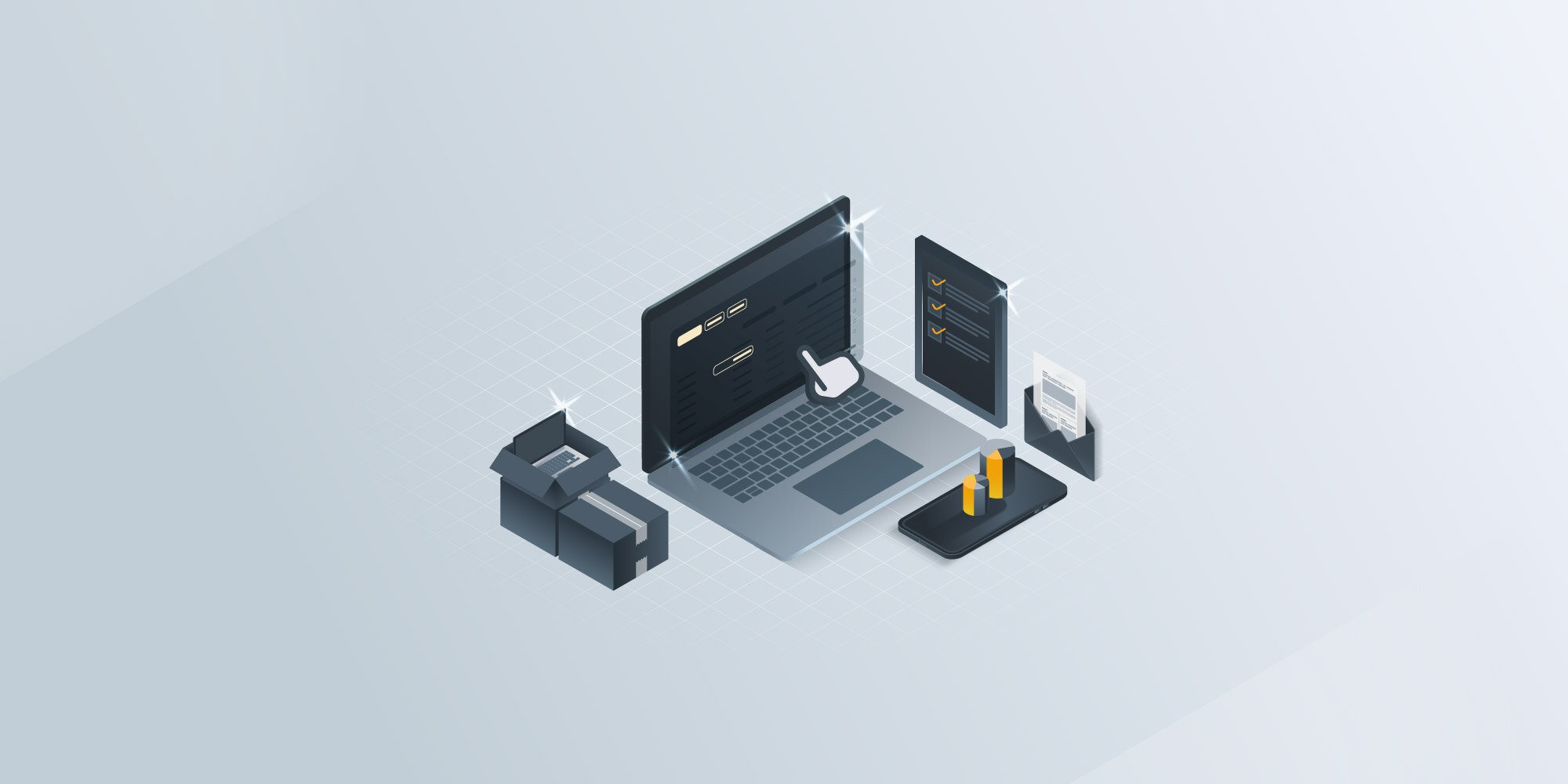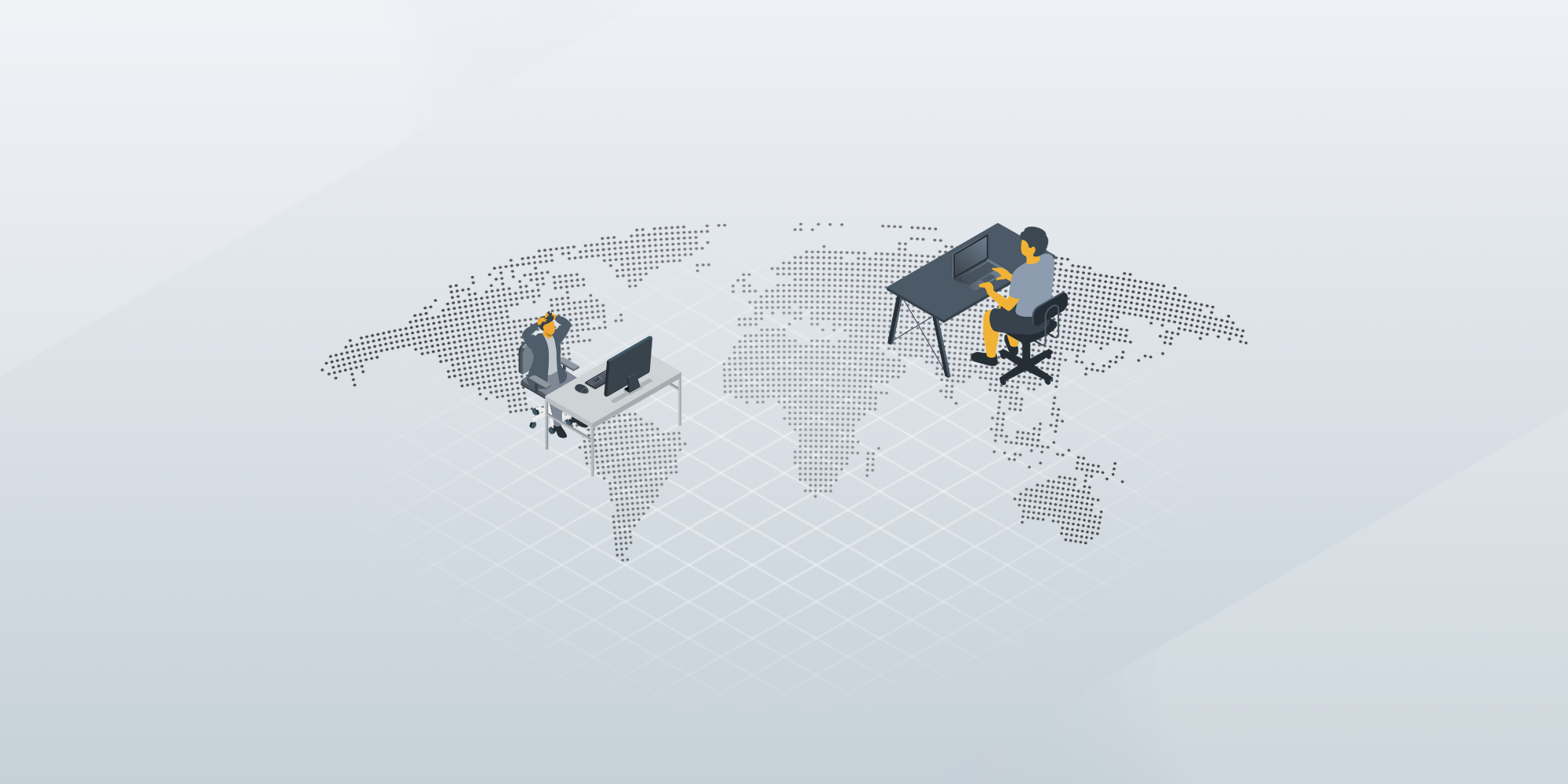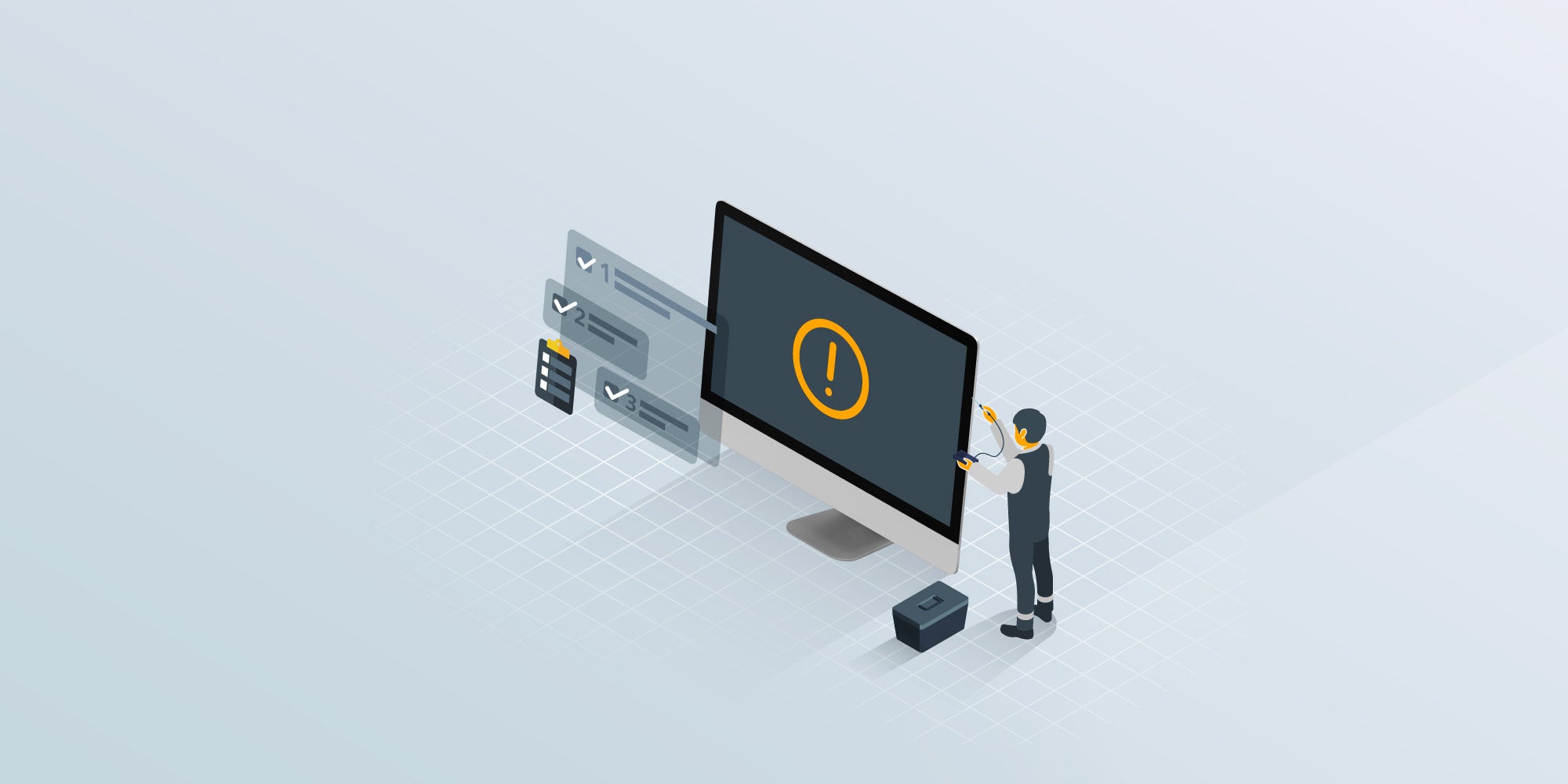Complete guide to IT asset recovery and disposition in 2025
 Mara Quintanilla
Mara Quintanilla
Managing end-of-life IT equipment is becoming necessary as businesses grow more distributed and device-dependent. The global IT Asset Disposition (ITAD) market is projected to reach $31.7 billion by 2031, driven by growing concerns over data security and the need for sustainable disposal.
The rapid rise of Artificial Intelligence (AI) presents both a threat and an opportunity, as generative AI creates new cyber risks while also offering more intelligent asset management solutions. And with new privacy laws taking effect in the U.S. across 2025 and 2026, the compliance net is widening far beyond GDPR and HIPAA, so a solid ITAD strategy is more important than ever.
IT asset recovery when an employee leaves is part of this process. It ensures that equipment is retrieved, data is wiped, and devices are reused, resold, or recycled in a compliant and cost-effective manner. Done right, it reduces risk, protects sensitive data, and maximizes the value of your technology investments.
Want to see how easy it is to offboard an employee and recover IT assets with the GroWrk platform? Try the product tour below!
What is IT asset recovery?
IT asset recovery is the structured process of retrieving, evaluating, and securely disposing of technology assets that are no longer in active use. These assets typically include laptops, desktops, servers, monitors, and mobile devices, along with the sensitive data they store.
Unlike simple disposal, recovery is about making informed decisions at end-of-life: reuse, redeployment, resale, or certified recycling. Each decision should be supported by compliance documentation, recognized data sanitization standards (such as NIST SP 800-88), and sustainability practices that align with ESG reporting.
IT asset recovery is a critical phase of the broader IT asset lifecycle (procurement → deployment → maintenance → recovery/disposition). Done well, it transforms a risk-prone process into a value driver for the business.
During recovery, organizations aim to:
-
Maximize residual value by assessing market worth and reselling or redeploying functional equipment
-
Protect sensitive data using certified erasure methods with documented Certificates of Data Destruction (CoD)
-
Minimize e-waste by prioritizing refurbishment and responsible recycling over landfill disposal
-
Ensure compliance by maintaining detailed audit trails and meeting evolving requirements under GDPR, HIPAA, and new U.S. state privacy laws
Recovery isn’t just “returning old laptops.” It’s a security, financial, and sustainability function that safeguards your brand while unlocking new value streams.
IT asset recovery vs. traditional disposal: Why ITAD isn’t optional
| Category | IT asset recovery | Traditional disposal |
|---|---|---|
| Data security | Certified erasure (e.g., NIST SP 800-88), Certificates of Destruction (CoD), audit trails | Data often left intact, exposing companies to breaches |
| Compliance | Aligned with GDPR, HIPAA, and new U.S. privacy laws (2025–2026) | High risk of non-compliance, fines, and legal liability |
| Environmental impact | Certified recycling, circular economy reporting, ESG alignment | Landfill dumping, toxic leakage, reputational harm |
| Financial outcome | Generates resale revenue and reduces new hardware spend | Pure cost center; risk of added penalties |
| Chain of custody | Documented, tracked, insured logistics from pickup to final disposition | Chain of custody often broken or unverified |
| Reputation risk | Brand protected by transparency and defensible reporting | High, exposure of sensitive data or e-waste scandals |
How to recover IT assets in 5 steps
_4_11zon.jpg?width=600&height=300&name=it%20asset%20recovery%20(3)_4_11zon.jpg)
A repeatable, documented process is the backbone of secure IT asset recovery. Following these steps helps organizations protect data, maximize value, and reduce environmental impact, whether your workforce is on-site, hybrid, or fully remote.
1. Initiate retrieval at offboarding
Trigger recovery immediately when an employee exits. A centralized system tied to your Identity and Access Management (IAM) platform ensures you know exactly which devices are assigned. Arrange return shipping or pickup with prepaid labels. For distributed teams, providers like GroWrk handle global retrieval consistently, eliminating the risk of “lost laptops.”
2. Assess and inventory devices
When devices are returned, inspect their condition and update your asset inventory system. Categorize them for reuse, refurbishment, resale, or certified disposal. Keeping a real-time asset ledger not only aids IT governance but also informs procurement decisions.
3. Sanitize and erase data securely
Data doesn’t retire when devices do. Before redeployment or resale, erase sensitive information using certified data destruction methods. This is now mandatory under GDPR, HIPAA, and the wave of new U.S. state privacy laws coming online in 2025–2026.
Common methods (per NIST SP 800-88 Rev.1):
-
Software Wipe (Clear): Low-cost, auditable; best for functional devices but ineffective on damaged drives.
-
Degaussing (Purge): Physically scrambles data on HDDs/tapes but destroys the hardware; ineffective for SSDs.
-
Physical Destruction (Destroy): Shredding or crushing; 100% data removal but eliminates resale value.
-
Crypto Erase: IEEE 2883-compliant; instant on pre-encrypted drives; preserves hardware for reuse.
Pro Tip: Always demand a Certificate of Data Destruction (CoD). No certificate = no audit trail = no compliance.
4. Determine resale or redeployment potential
Evaluate equipment for secondary market value or redeployment potential. Reselling functional devices generates revenue; redeploying internally reduces new hardware spend. Both options support circular economy goals.
5. Recycle or dispose responsibly
For devices beyond recovery, partner with R2v3 or e-Stewards–certified recyclers to ensure materials are ethically reclaimed and toxic e-waste is avoided. Always secure certificates of destruction and recycling reports to remain audit-ready.
4 benefits of IT asset recovery
_1_11zon.jpg?width=600&height=300&name=it%20asset%20recovery%20(6)_1_11zon.jpg)
A mature IT asset recovery program is not just about retrieving old devices, it’s a multi-layered business advantage. Organizations that systematize recovery consistently see measurable gains in cost savings, compliance, sustainability, and security.
1. Save money and unlock value
-
Recover resale value: Functional equipment resold on secondary markets can generate significant returns, with laptops and servers often holding resale value for 3–5 years after purchase depending on condition and demand.
-
Reduce procurement spend: Reusing devices internally cuts new hardware costs and delays refresh cycles.
-
Avoid hidden costs: Proactive recovery prevents wasted spend on storage, ad hoc shipping, and last-minute disposal fees.
2. Protect data and reduce risk
-
Certified erasure = compliance: Following NIST SP 800-88 standards ensures defensible data destruction and avoids regulatory penalties under GDPR, HIPAA, and new state privacy laws.
-
Audit-ready trails: Recovery workflows with documented Certificates of Data Destruction (CoD) safeguard governance and accountability.
-
Reduced liability: Improper disposal has already cost firms millions in fines and settlements, recovery prevents your equipment from becoming the next headline.
3. Improve environmental sustainability
-
Cut e-waste: Partnering with certified recyclers keeps hazardous materials out of landfills and ensures assets are processed responsibly.
-
Support ESG reporting: Documented carbon savings and diversion metrics feed directly into corporate sustainability reports.
-
Protect brand reputation: Responsible disposal practices strengthen customer and stakeholder trust.
4. AI-powered security
-
Smarter threat detection: AI and machine learning tools can flag compromised or high-risk devices before processing.
-
Automated compliance checks: AI ensures every erasure, resale, or recycling step is logged and policy-aligned.
-
Future-proof resilience: As adversarial AI risks grow, intelligent automation helps IT teams stay ahead of evolving threats.
Common challenges in IT asset recovery
Even the most mature IT teams face hurdles when scaling recovery programs, especially in distributed or hybrid environments. Addressing these challenges directly is key to reducing risk and protecting ROI.
| Challenge | Risk | Solution |
|---|---|---|
| AI-driven cyber threats | Generative and adversarial AI increase the risk of sensitive data being repurposed if devices aren’t sanitized. | Implement NIST SP 800-88–aligned destruction protocols and partner with vendors who actively address AI-era risks. |
| Regulatory pressure | New privacy laws mean nearly half the U.S. population will be covered in addition to GDPR and HIPAA. Penalties are rising. | Require partners with R2v3, e-Stewards, or ISO 14001/9001 certifications and maintain defensible documentation. |
| Logistics and chain of custody | Global pickups, hybrid cloud asset tracking, and multi-location custody can overwhelm IT. Weak custody increases compliance risk. | Use a platform with global reach, prepaid logistics, and real-time tracking to ensure secure custody from pickup to final disposition. |
| Undervalued assets | Without evaluation, usable devices are recycled too early. Many assets retain resale value for 3–5 years post-purchase. | Work with vendors or tools that assess resale based on age, condition, and market demand before disposal. |
| Data security gaps | Incomplete or uncertified erasure leaves organizations exposed to breaches, penalties, and reputational damage. | Mandate Certificates of Data Destruction (CoD) and only work with certified providers. |
Cost breakdown & recovery metrics: What impacts your ROI
What drives IT asset recovery costs?
| Factor | Impact on cost | Example |
|---|---|---|
| Volume & logistics | Shipping, pickups, and warehousing drive costs higher as scale increases. | Global returns can add significant freight expenses if unmanaged. |
| Device condition | Refurbishment is cheaper than replacement, but broken devices often become scrap. | A 3-year-old laptop in good condition has resale value; a damaged one may not. |
| Data sanitization method | Software wipes are cost-efficient; shredding or degaussing is more expensive. | NIST SP 800-88 “Clear” vs. “Destroy.” |
| Compliance overhead | Certifications, audits, and documentation add upfront cost but prevent fines. | Proof of GDPR/HIPAA compliance during audit. |
| Resale channel | Direct resale captures more value; brokers and bulk recyclers yield less. | Selling directly on secondary markets vs. bulk liquidation. |
How to calculate recovery rate & ROI
-
Recovery Rate Formula:
(Number of Assets Recovered ÷ Number of Eligible Assets) × 100
→ Target: 80–90%. Below 70% means value leakage. -
ROI Formula:
(Resale Value + Cost Avoidance) – (Recovery Costs + Disposal Fees)Example:
-
Resell 100 laptops @ $200 avg = $20,000
-
Avoid $15,000 in new purchases via redeployment
-
Subtract $5,000 in recovery costs
-
Net ROI = $30,000 gain
-
Hidden revenue streams
-
Precious metals: Servers often contain $15–$50 in recoverable gold, copper, and nickel.
-
Donation tax credits: Donating functional devices to nonprofits provides write-offs while supporting ESG goals.
-
Trade-in programs: Major vendors (Apple, Cisco, HP) offer credits toward new purchases when retiring old hardware.
By tracking these metrics, IT leaders can quantify ROI from recovery, secure budget for future initiatives, and make asset disposition a measurable contributor to business value.
By the numbers: The urgency of IT asset recovery in 2025
_5_11zon.jpg?width=600&height=300&name=it%20asset%20recovery%20(2)_5_11zon.jpg)
-
E-Waste Explosion: Global e-waste reached a record 62 million tonnes in 2022 and is projected to climb to 82 million tonnes by 2030.
-
Recycling Gap: Only 22.3% of e-waste generated in 2022 was formally collected and recycled in an environmentally sound way. The rest went to landfills, incineration, or informal processing.
-
Breach Costs: The average global cost of a data breach hit USD 4.45 million in 2023 and rose further to USD 4.88 million in 2024.
Asset disposal and the environment
Improper IT asset disposal is more than wasteful, it’s environmentally damaging. Devices dumped into landfills can release toxic metals and plastics that pollute soil and water. By integrating recovery into the lifecycle, companies can reuse, refurbish, and recycle equipment instead of adding to the global e-waste problem.
Responsible disposal isn’t only about sustainability, it’s also about data protection. Certified erasure and destruction ensure that sensitive information never leaves the organization while keeping devices out of unsafe disposal streams.
A trusted IT asset recovery partner provides:
-
Environmentally sound processing aligned with regulations
-
Documentation for compliance and ESG reporting
-
Audit-ready proof that reduces both environmental and reputational risk
By embedding sustainability into recovery, organizations reduce e-waste, strengthen data security, and demonstrate measurable ESG progress across the entire IT asset lifecycle.
Circular economy and asset recovery
Traditional IT asset management follows a linear path, procure, use, and dispose. The circular economy replaces that model with strategies designed to extend asset life and recover value at every stage.
IT asset recovery is central to this shift:
-
Reuse: Extend hardware life through redeployment or donation
-
Refurbish: Restore devices for resale or internal use
-
Recycle: Extract raw materials responsibly to reduce demand for virgin resources
For businesses, the payoff is twofold:
-
Financial gains: Functional equipment generates revenue on secondary markets and reduces premature procurement spend.
-
Sustainability gains: Keeping IT assets in circulation cuts e-waste volumes, reduces carbon footprints, and supports ESG goals.
Adopting circular principles in recovery ensures organizations maximize technology investments while meeting rising stakeholder and regulatory expectations for sustainability.
IT asset management strategy
_3_11zon.jpg?width=600&height=300&name=it%20asset%20recovery%20(4)_3_11zon.jpg)
An effective IT asset management (ITAM) strategy spans the entire lifecycle, from procurement to deployment, maintenance, recovery, and final disposition. Its purpose is to maximize value, reduce costs, and protect data while ensuring compliance and sustainability.
Key elements of a strong ITAM strategy include:
-
Comprehensive asset recovery: Secure data destruction and certified recycling safeguard sensitive information and reduce environmental risk.
-
Certified partners: Working with recovery providers that hold R2v3, e-Stewards, or ISO certifications ensures compliance across jurisdictions.
-
Inventory management & tracking: Real-time visibility into device status prevents financial losses and supports smarter procurement decisions.
-
Data-first approach: Embedding security controls into every phase of the lifecycle aligns with modern frameworks such as Zero Trust.
With these practices in place, organizations can cut costs, reduce risk, and meet ESG commitments while maintaining full control over sensitive data across the IT asset lifecycle.
Cross-functional playbook: Who needs to be involved?
IT asset recovery succeeds when it’s treated as a cross-functional responsibility, not just an IT task. Each team plays a role in protecting data, maximizing value, and ensuring compliance.
-
Legal & Compliance: Interprets and enforces regulations such as GDPR, HIPAA, CCPA, and the new wave of state privacy laws (2025–2026).
-
Finance: Tracks ROI, manages resale revenue, and factors in tax benefits from donations or trade-in credits.
-
Procurement: Coordinates refresh cycles with recovery timelines and negotiates trade-in or resale agreements.
-
Sustainability/ESG teams: Measure e-waste diversion, carbon footprint reduction, and circular economy metrics for reporting.
-
HR: Initiates recovery through offboarding workflows and ensures employees follow device return policies.
-
Security/CISO: Validates destruction methods, enforces chain-of-custody standards, and audits vendor compliance.
⚠️ Reality check: Even in 2025, “dumpster diving” remains a real attack vector. Careless disposal exposes everything from drives to sticky notes. Recovery isn’t just sustainable, it’s a frontline defense for corporate security.
Top 5 IT asset recovery services for 2025
As businesses strive to enhance their IT asset recovery process, selecting the right provider becomes crucial. Here are the top four IT asset disposition services and recovery providers for 2025, each offering unique benefits to streamline your operations.
GroWrk

GroWrk is an all-in-one IT asset lifecycle platform built for distributed teams. It handles global retrievals, certified data destruction, device redeployment, and e-waste recycling in over 150 countries.
Pros:
-
Global logistics and real-time asset tracking
-
Automated workflows for offboarding and recovery
-
Strong sustainability and compliance documentation
Cons:
-
Pricing not publicly listed (custom quote required)
Ideal for: Companies with remote or hybrid teams looking for a full-service recovery platform.
Workwize
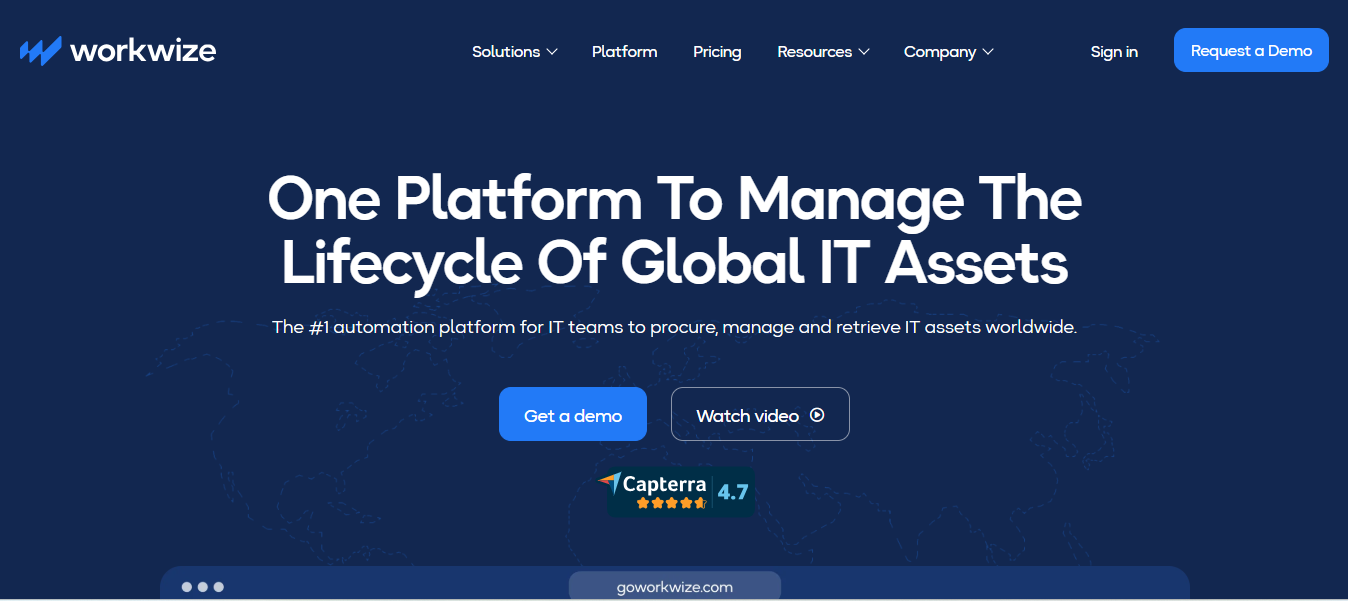
Workwize provides asset tracking, secure returns, and destruction services with a focus on user-friendly procurement and offboarding.
Pros:
-
Offers ISO-certified destruction and chain-of-custody
-
Integration with IT catalogs and procurement platforms
Cons:
-
Higher pricing tiers may not suit smaller teams
Ideal for: Mid-sized companies needing integrated IT procurement and recovery.
Firstbase
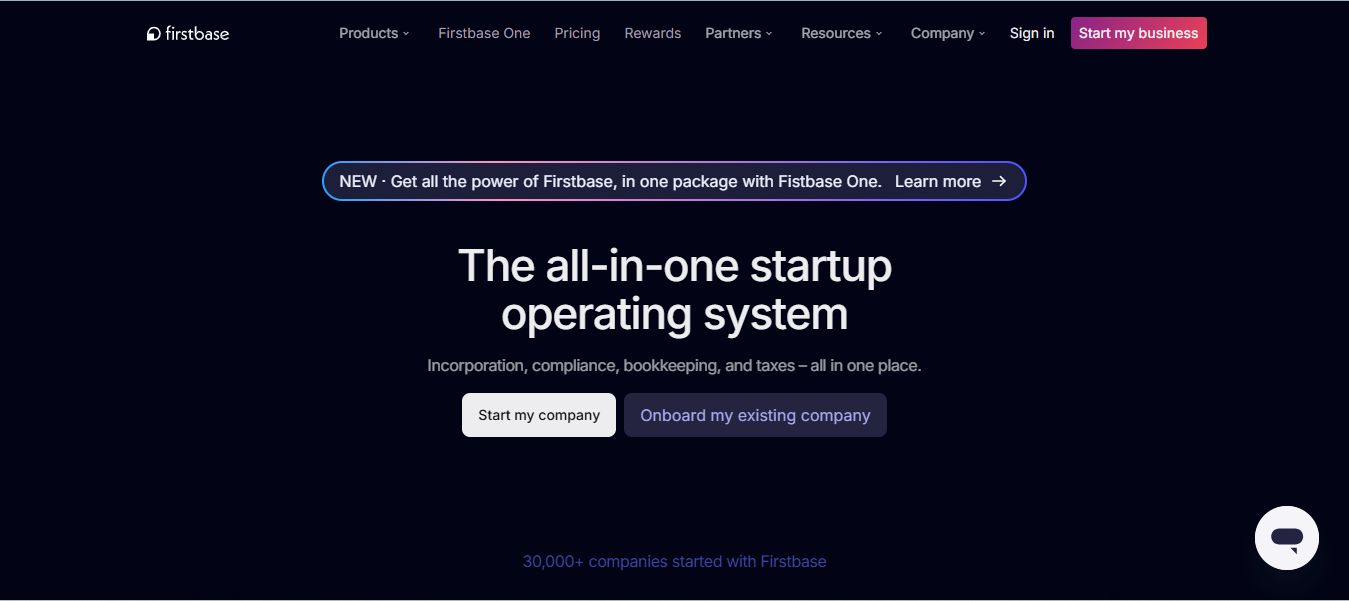
Firstbase offers a platform for managing IT equipment distribution, recovery, and redeployment with emphasis on ease of use.
Pros:
-
Intuitive dashboard and device tracking
-
Support for secure erasure and redeployment
Cons:
-
Some users report slower device return timelines
Ideal for: Startups and fast-scaling companies that prioritize user experience.
Allwhere

Allwhere customizes asset recovery processes based on business needs and places sustainability at the forefront of its services.
Pros:
-
Flexible recovery workflows and recycling options
-
ESG-aligned recovery practices and documentation
Cons:
-
Limited support hours and slower response times reported
Ideal for: Organizations seeking a highly customizable, sustainability-focused provider.
Hofy
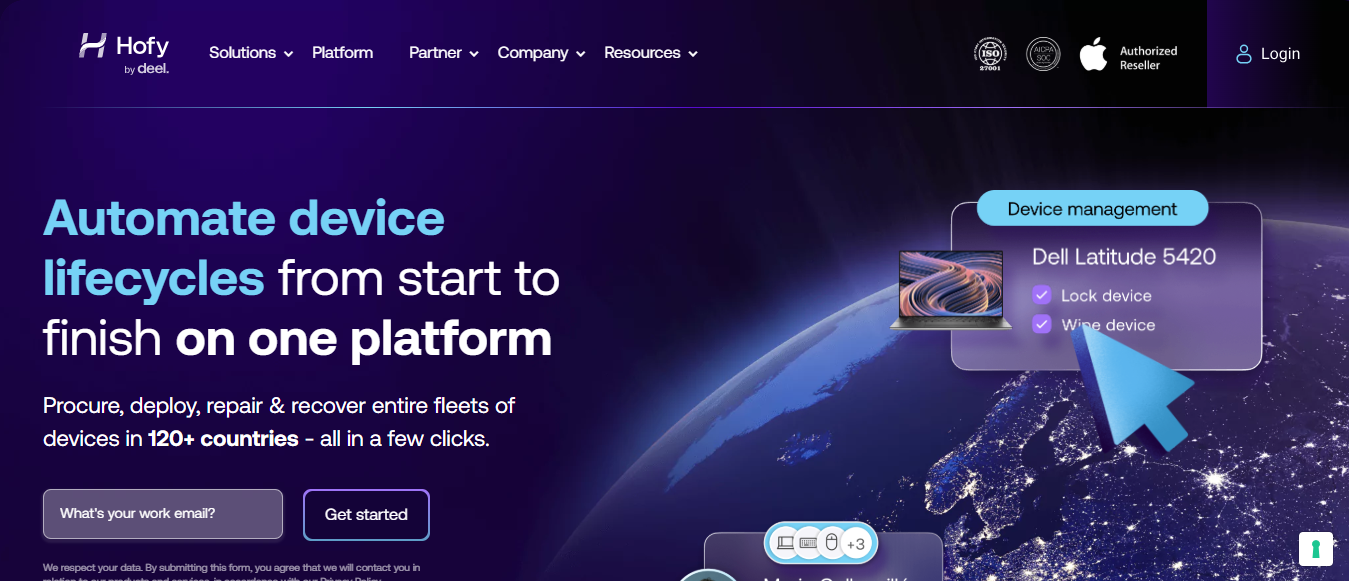
Hofy rebranded under Deel IT, automates recovery workflows with minimal manual intervention. It’s designed for speed and global reach.
Pros:
-
Quick deployment and recovery for international teams
-
Strong automation features
Cons:
-
Limited customization for complex enterprise environments
Ideal for: Companies needing fast, no-fuss IT asset recovery with global support.
6 things to consider when choosing an IT asset recovery provider
_6_11zon.jpg?width=600&height=300&name=it%20asset%20recovery%20(1)_6_11zon.jpg)
Selecting the wrong ITAD partner can expose your company to data loss, fines, and reputational damage. Use these six criteria to evaluate providers:
1.Experience and expertise
-
Favor vendors with a proven record in IT asset disposition.
-
Prioritize those familiar with your industry’s compliance and security needs.
2. Certifications and compliance
-
Confirm certifications such as R2v3, e-Stewards, ISO 14001/9001.
-
Ensure they meet global requirements (GDPR, HIPAA) plus new U.S. state privacy laws rolling out through 2026.
3. Data security protocols
-
Require certified erasure methods, ideally aligned with NIST SP 800-88.
-
Look for advanced chain-of-custody verification (e.g., blockchain pilots).
-
Confirm alignment with Zero Trust security frameworks.
4. AI and automation capabilities
-
Check if providers leverage AI/ML for logistics optimization, device valuation, or security monitoring.
-
Ask how they mitigate emerging AI-related risks in data destruction.
5. Environmental responsibility
-
Ensure the vendor supports circular economy practices and transparent e-waste reporting.
-
Request carbon footprint tracking and ESG-aligned sustainability metrics.
6. Reporting and documentation
-
Demand real-time dashboards and exportable audit reports.
-
Certificates should be issued for every destruction, recycling, or resale event, without exception.
Beyond laptops: Data centers, automation & enterprise scale
_2_11zon.jpg?width=600&height=300&name=it%20asset%20recovery%20(5)_2_11zon.jpg)
End-of-life management goes far beyond laptops. Enterprise environments demand processes that scale to data centers, cloud-connected hardware, and the growing web of IoT devices.
Data center decommissioning: high stakes
Decommissioning a data center involves:
-
Thousands of servers, SANs, and switches with sensitive data
-
High-value components like GPUs, RAM, and SSDs
-
Complex logistics such as rack removal, power-down protocols, and secure transport
Failure to manage this properly can expose petabytes of regulated data and waste millions in recoverable hardware value.
Automation & integration: must-haves for 2025
Modern ITAD programs are increasingly automated:
-
API integrations with platforms like ServiceNow, Jira, and Okta enable auto-triggered recovery workflows.
-
Real-time dashboards provide a single pane of glass for tracking global assets, including location, chain-of-custody, and destruction certificates.
-
AI for valuation predicts resale value by analyzing model, condition, and market demand.
-
Blockchain pilots are emerging for immutable chain-of-custody verification.
Don’t forget software & spares
-
Software licenses (Microsoft, Adobe, VMware) can be reassigned, saving procurement costs.
-
Spare parts (power supplies, fans, drives) can be harvested to reduce break/fix expenses by up to 40–60%.
-
IoT, AV, and smart devices are often overlooked, but they’re IT assets subject to the same recovery and compliance requirements.
How GroWrk simplifies secure, global IT asset recovery
Recovering IT assets shouldn’t be a logistical nightmare. GroWrk turns a complex, high-risk process into a seamless, secure workflow, no matter where your employees are located.
Here’s what you get with GroWrk:
-
Global reach, zero hassle: Retrieve and redeploy devices in 150+ countries with pre-paid shipping, local warehousing, and real-time tracking.
-
Automated offboarding: Schedule pickups the moment an employee exits, with workflows that notify IT, track progress, and update your inventory.
-
Certified data destruction: Securely erase every device with tamper-proof audit logs and certificates to meet GDPR, HIPAA, and ISO compliance.
-
Reuse, resell, or recycle: Maximize residual value through redeployment or resale, or ethically recycle with full documentation and disposal certificates.
-
Centralized visibility: Track every device’s status, location, and chain of custody from one dashboard, no more spreadsheets or email threads.
Whether you're managing 20 laptops or 2,000, GroWrk gives you the tools to recover IT assets securely, sustainably, and at scale. Schedule a demo to learn more.
Frequently asked questions
What is IT asset recovery
IT asset recovery is more than just a hardware asset disposal process; it’s a sustainable strategy to breathe new life into old equipment and optimize resource utilization. In short, it means managing and disposing of technology assets securely, environmentally friendly and cost effective.
Why is IT asset recovery important for business?
It maximizes value, reduces compliance costs, extends equipment life, allows you to manage inventory, is cost effective, sustainable and ensures proper asset management and disposal of equipment at end of life.
How does IT asset recovery save costs?
It saves costs by extending IT asset life, optimizing resource usage and recouping initial investment through resale or remarketing. Proper disposal also prevents fines and penalties.
How do I ensure data security during asset recovery?
To ensure data security during asset recovery services, use secure data wiping, encrypt sensitive data, partner with reputable logistics providers, document chain of custody, get asset recovery certificates for data destruction and educate end users on data security best practices.


